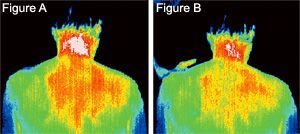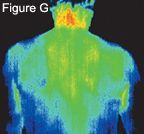Whether you accept it, avoid it or live somewhere in between, insurance coverage has become a defining issue for our profession. Patients increasingly expect to use their benefits, practitioners want to be compensated fairly for their time and expertise, and the system itself remains – at best – fragmented. The encouraging news is that coverage has expanded in meaningful ways. The challenging news is that reimbursement, across the board, remains inadequate.
Evidence of Instant Effect of External Qi
One of the most mysterious elements in Chinese medicine that puzzles mainstream scientists is qi. The traditional explanation of the beneficial effect of acupuncture relies on the smooth flow of qi along the meridians. But what is qi in terms of modern science? Can we detect its change by the fingers of an experienced Chinese doctor rather than modern scientific instruments? How does the change of qi relate to a person's health condition that is measured by modern means, such as a blood pressure monitor, blood glucose test, PSA test, etc? These are big questions that many researchers have tried to solve with only limited success so far.
Science progresses most of the time by a very small step each time. But if the progress is genuine, it will never go backward. We propose to start with the most basic, but crucial step in our understanding of qi: Does it exist in the first place?
From the point of physics, experimental results will be much less controversial if we concentrate first on the study of external qi that is outside the human body. Internal qi inside the human body is much more complex because the properties and evidence of qi will be clouded by complicated physiological processes of tissues and organs where internal qi circulates.

Let me describe a simple experiment to provide some evidence for the existence of external qi. This experiment is performed by a healer who will emit external qi without touching the patient. Not touching the patient is important here, because any effect found on the patient cannot be attributed to the nervous system. Something must transmit through the empty space between the healer and the patient. Electrical signals or biochemical reactions that are transmitted through the nervous system do not travel through empty space.
A significant and influential group of researchers in the international acupuncture community advocates the view that there are no meridians. All of the benefits of acupuncture come from signals transmitted through the nervous system. I do not agree with this view, and hence emphasize the nontouching aspect in all experiments.

I use an infrared imaging system to record, minute by minute, the change of the body surface temperature of a patient immediately after the healer starts emitting external qi. The patient's back is facing the healer so they do not know if or when the healer emits qi or not. On Aug. 9, 2005, such an experiment was carried out on a patient with neck pain due to a car accident many years ago. The results are shown below in Figures A through G. The color code is white for the hottest areas, then red, yellow, green and blue, with the coldest in black. The position of the neck where the pain is most serious shows up as having the hottest temperature (white). The hottest temperature is reduced gradually, minute by minute. The maximum temperatures of the neck reduced from 99.32 F to 97.66 F by an amount of 0.69, 0.11, 0.75, 0.15, 1.4 and 1.66 in minutes 1, 2, 4, 6 and 7, respectively. The total reduction of the maximum temperature was 1.67 F. The normal statistical fluctuation in skin temperature is about 0.2 F to 0.45 F. It is at least three standard deviations; hence, the result is statistically significant. The maximum temperatures of the back reduced from 97.81 F to 96.73 F by an amount of 0.15, 0.32, 0.64, 0.48, 1.51 and 0.69 in 1, 2, 4, 6 and 7 minutes, respectively.
Since the time is short, less than 10 minutes, and the patient is kept in a calm clinical room with constant temperature, there is really no conceivable environmental factor that can attribute to the reduction of body surface temperature. We therefore attribute the reduction of maximum temperature at the position of serious pain in the neck to the effect of external qi.

I have performed and recorded many such experiments (over 300 cases) in various circumstances and patients with different health problems, achieving similar results. Some of the typical results have now been published in Medical Acupuncture [2007;19(4):201-9], where much of the details of the experiment are discussed.
It is most interesting to point out that the steady decrease in maximum temperature can be fitted very well with an exponential curve. When cells in the neck were damaged, their immediate reaction was to request more nutrients and pump up the biochemical reactions to repair the damage. The heat released in the biochemical reactions increased the skin temperature that I observed. As long as the cell damage persisted, the heat would not go away. When the cells were repaired, biochemical reactions ceased and heat was reduced.

It is similar to having a flu; body temperature increases to combat the virus. As long as the viruses are there, our high temperature will not go away. When the virus is gone, our normal body temperature resumes. The exponential decrease of the maximum temperature fits well with our quantum picture of qi that operates inside our body. For more details, visit www.qluni.org.
The next question is: What are the properties of external qi? My own guess is that the external qi consists of electromagnetic waves, subsonic waves and others. The component of external qi that is easiest to measure is the electromagnetic waves. Since the frequency range where electroacupuncture works is from 0.1 Hz to 100 Hz, I propose to use a very sensitive electromagnetic detector to look for electromagnetic waves (frequencies between 0.1 Hz to 100 Hz) between the healer and the patient when external qi is emitted. It is a relatively easy experiment from a technical viewpoint. We just need determination, manpower and a suitable detector to perform such an experiment.


